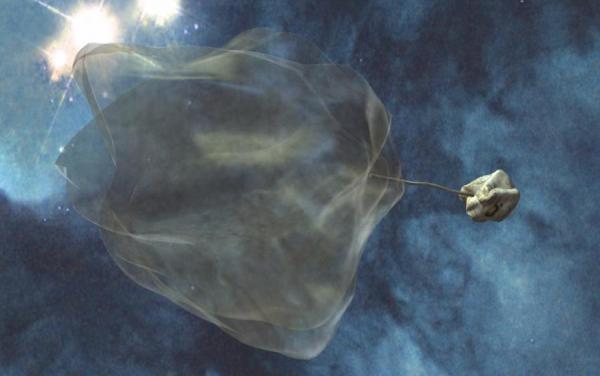BY LETTER
Space Amoeba, Giant
Giant Space amoeba-like lifeforms | |
 Image from Steve Bowers | |
| An extended and a contracted cosmoamoeba exchange silicoid information packets in the Trifid Nebula | |
In their normal state they are semi-transparent, becoming opaque when contracted and almost completely diaphanous when extended.
Their biochemistry and composition is based on trillions of microscale nodules, not unlike foglets. These nodules exist in various specialized subtypes, and are able to catch and metabolize micrometeors slowly. They have a kind of silicon-ice metabolism that is highly redundant. They use stellar winds not only to move, but also to feed on dust following their magnetic fields.
It is still not clear whether they are a natural lifeform that evolved from organic molecules in comets or protostellar nebula, or a neogen adapted to space by an unknown alien race. No trace of any alien ruins have been found in region, not surprising given that it mostly consist of young stars and few planets, and no relic ships or alien artifacts have been discovered either.
Extended space amoebas appear to catch the solar wind from a number of nearby bright O- and B- class stars, ultimately attaining velocities (according to doppler shift analysis) of several tens of thousands of km/sec. In this way, the giant space amoebas appear to be migrating through the galaxy.
There is still some controversy over the Lagoon and Trifid populations belong to two different species, two subspecies, or simply the same species that has modified itself according to local conditions
What appear to be similar space amoebas have been observed by long range sensors in the nearby Omega and Eagle Nebulae, but this still has to be confirmed.
Related Articles
- Astragen(s)
- Cosmoamoeba - Text by M. Alan Kazlev
Generic technical term for the giant space amoebas recently discovered in a number of bright emission nebulae along to the Sagittarius Outer Volume. - Lagoon Nebula
- Trifid Nebula
Appears in Topics
Development Notes
Text by M. Alan Kazlev
Initially published on 31 December 2001.
Initially published on 31 December 2001.






